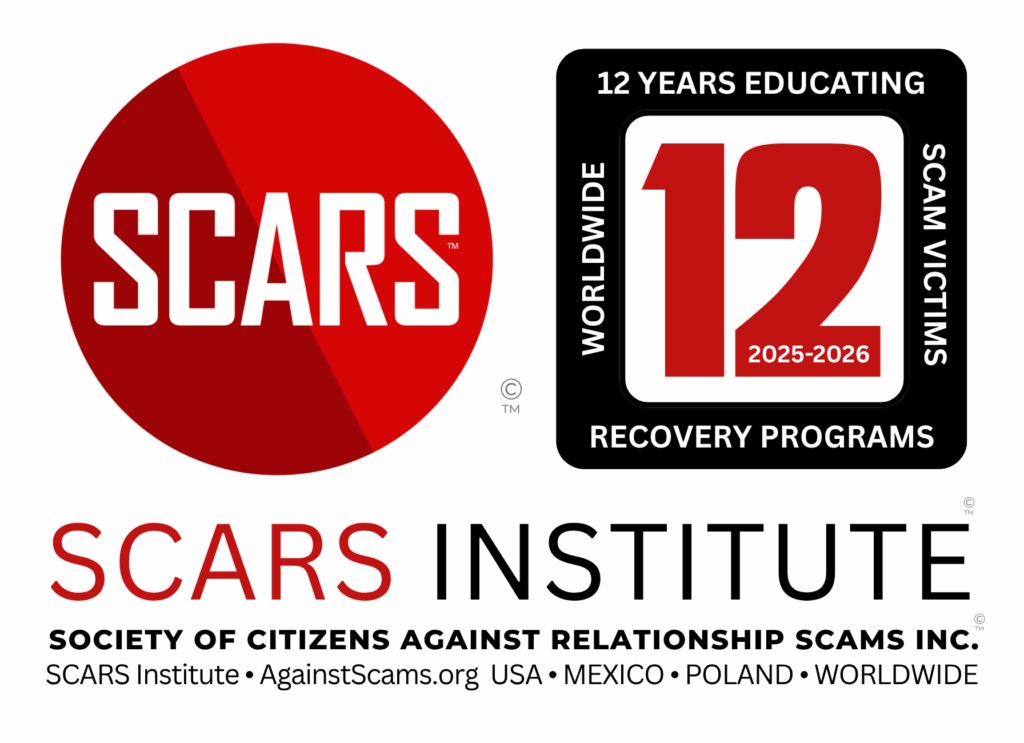The Relationship Between Pain and Pleasure
How the Brain can Confuse them and what this means for Scam Victims
Primary Category: Recovery Psychology
Authors:
• Vianey Gonzalez B.Sc(Psych) – Licensed Psychologist, Specialty in Crime Victim Trauma Therapy, Neuropsychologist, Certified Deception Professional, Psychology Advisory Panel & Director of the Society of Citizens Against Relationship Scams Inc.
• Tim McGuinness, Ph.D., DFin, MCPO, MAnth – Anthropologist, Scientist, Polymath, Director of the Society of Citizens Against Relationship Scams Inc.
About This Article
Humans have a complex relationship with pain and pleasure, with the brain often linking the two in unexpected ways. Activities like eating hot peppers or intense exercise can be pleasurable due to the release of endorphins and dopamine, which act as natural painkillers and “feel-good” neurotransmitters.
This extends beyond physical pain to psychological experiences, such as those endured by scam victims. During a scam, victims experience emotional highs and lows, manipulated by scammers to create a cycle of hope and despair, engaging the brain’s reward system. After the scam, the realization of being deceived leads to psychological trauma and chronic stress, mirroring the dynamics of physical pain.
Understanding this relationship helps in providing better support for scam victims, addressing their emotional pain, and restoring their well-being. This complex dynamic highlights the need for targeted therapeutic approaches to aid recovery and resilience.

Understanding the Curious Relationship Between Pain and Pleasure – Why Some Pain Feels Good – What Does this Mean for Scam Victims?
WARNING: This article deals with physical and psychological pain and may be too intense for some recent scam victims. Discretion is advised.
Introduction
Humans have a peculiar relationship with pain. Sometimes, we actively seek out experiences that involve pain (physical or emotional,) such as eating hot peppers, engaging in certain intense physical activities, or even participating in sadomasochistic practices. This might seem counterintuitive, as pain is generally an unpleasant sensation.
The relationship between physical pain and pleasure is not unique to humans. This phenomenon is observed in various other species, suggesting that the underlying mechanisms are deeply rooted in the biology of many animals.
Pain and pleasure, though seemingly opposites, share intricate connections in the brain. This relationship can explain why humans sometimes find certain types of pain enjoyable. This phenomenon extends to the psychological experiences of scam victims, both during and after the scam.
When experiencing pain, the brain releases endorphins and dopamine. Endorphins act as natural painkillers, reducing pain and generating feelings of euphoria. Dopamine, the “feel-good” neurotransmitter, is associated with reward and pleasure. This biochemical response can make certain painful experiences, like eating hot peppers or intense physical activity, pleasurable. The release of these chemicals can create a sense of well-being and even addiction to the pain-induced pleasure.
However, the relationship between pain and pleasure is quite complex, involving intricate processes in our brains.
The Brain’s Pain and Pleasure Connection
Shared Pathways: Pain and pleasure share some of the same neural pathways in the brain. Areas like the insula, anterior cingulate cortex, and prefrontal cortex are involved in processing both pain and pleasure. This overlap can cause the brain to interpret pain as part of a rewarding experience.
Chemical Releases: When we experience pain, our bodies release endorphins. Endorphins are chemicals that act like natural painkillers. They not only dull the sensation of pain but also produce a feeling of euphoria. Additionally, dopamine, a neurotransmitter associated with pleasure and reward, can be released during certain painful experiences. This combination can make pain feel pleasurable under the right circumstances.
Context Matters: The context in which pain is experienced greatly affects how we perceive it. For example, eating a hot pepper in a social setting where it’s seen as a fun challenge can make the pain feel more enjoyable. Similarly, in consensual sadomasochistic practices, the pain is experienced in a controlled and expected way, often enhancing the sense of pleasure.
Examples of Enjoyable Pain
Eating Hot Peppers: Capsaicin, the active component in hot peppers, binds to pain receptors in our mouths, creating a burning sensation. This activates the release of endorphins and dopamine, making the experience enjoyable despite the pain. Many people enjoy the thrill and the rush that comes from eating spicy food.
Physical Activities and Sports: Activities like intense exercise or sports can involve a degree of pain, such as muscle soreness. However, the release of endorphins during and after exercise can create a “runner’s high,” where the pain is overshadowed by feelings of euphoria and accomplishment.
Sadomasochistic Practices: In the context of consensual BDSM activities, pain can be pleasurable due to the release of endorphins and dopamine. The psychological aspects, such as trust and consent, also play significant roles in transforming pain into a pleasurable experience.
Self-Harm
For some individuals, self-harm can be a way to cope with emotional distress. The physical pain can provide a temporary sense of relief or numbness from emotional pain. The endorphins released during self-harm can create a short-lived feeling of euphoria. However, this is a harmful and maladaptive coping mechanism, and individuals engaging in self-harm should seek professional help.
Individual Differences
Not everyone experiences pain and pleasure in the same way. Genetics, past experiences, and psychological factors can influence how we perceive pain and whether we find it pleasurable. Some people may have a higher pain threshold or derive more pleasure from pain due to these factors.
Relationship Between Psychological Pain and Pleasure
The connections between psychological pain and pleasure is a complex phenomenon deeply rooted in human neurobiology and psychology. This relationship is not only observed in physical experiences of pain and pleasure but also in emotional and mental contexts. Understanding this dynamic can provide valuable insights into human behavior, mental health, and even therapeutic practices.
Neurobiological Basis
Shared Neural Pathways: Both pain and pleasure activate similar neural circuits in the brain. Regions such as the anterior cingulate cortex and the nucleus accumbens are involved in processing both experiences. These areas are crucial for emotion regulation and reward processing, highlighting the interconnectedness of pain and pleasure pathways.
Endorphins and Dopamine: Endorphins, the body’s natural painkillers, are released during painful experiences, providing a sense of relief and sometimes even pleasure. Dopamine, a neurotransmitter associated with pleasure and reward, can also be released in response to pain, creating a paradoxical sense of pleasure derived from the painful experience.
Psychological Mechanisms
Catharsis: Psychological pain, such as sadness or grief, can lead to a cathartic experience. Catharsis involves the release of pent-up emotions, which can result in a sense of relief and emotional cleansing. This release can be pleasurable, providing a psychological balance and emotional reset.
Masochism and Emotional Relief: In some cases, individuals might seek out psychological pain as a means of emotional relief. This is seen in masochistic behaviors where the controlled experience of pain can lead to a release of stress and anxiety, subsequently bringing about pleasure or relief. The predictability and control over the pain can make it more bearable and even enjoyable for some.
Contrast and Relief: The contrast between pain and pleasure can enhance the perception of pleasure. Experiencing pain can make subsequent pleasure feel more intense and rewarding. This is a psychological phenomenon where the relief from pain is perceived as a pleasurable experience, often referred to as “relief pleasure”.
Therapeutic Implications
Pain as a Gateway to Healing: Psychotherapy often involves confronting painful emotions and memories. This process, while initially painful, can lead to significant emotional relief and personal growth. The therapeutic journey through psychological pain can result in a deeper sense of pleasure and satisfaction in life.
Mindfulness and Acceptance: Practices such as mindfulness and acceptance therapy encourage individuals to experience and accept psychological pain without judgment. This acceptance can reduce the suffering associated with pain and can lead to a paradoxical increase in pleasure and well-being.
Cultural and Social Perspectives
Rituals and Traditions: Many cultures have rituals that involve pain as a path to pleasure or enlightenment. For example, certain rites of passage or religious ceremonies involve fasting, physical challenges, or emotional trials that ultimately lead to a sense of accomplishment, community, and joy.
Art and Media: The depiction of psychological pain in art, literature, and media often resonates deeply with audiences. The exploration of pain and suffering can lead to a shared emotional experience that is both painful and pleasurable, creating a sense of connection and understanding among people.
The relationship between psychological pain and pleasure is complex, involving intricate neurobiological processes, psychological mechanisms, and cultural influences. This dynamic highlights the importance of understanding both pain and pleasure as integral parts of the human experience. By doing so, we can better control our emotional landscapes, create personal growth, and enhance our overall well-being.
How This Relates to Scam Victims
During the Scam
Emotional Rollercoaster: Scam victims often go through cycles of hope and disappointment. Scammers manipulate emotions, providing false hope and small “rewards” that temporarily boost the victim’s mood, much like the dopamine spikes from pleasurable pain. The brain’s reward system gets engaged, making the victim more likely to continue engaging with the scam.
Cognitive Dissonance: Victims might experience cognitive dissonance, a psychological discomfort from holding conflicting beliefs (e.g., suspecting a scam but hoping it’s legitimate). To reduce this discomfort, victims might rationalize their continued engagement, similar to how people justify enduring pain for pleasure. Note: this is not the victim’s fault, they are being manipulated into situations where these processes occur.
After the Scam
Psychological Trauma: The realization of being scammed triggers significant stress and emotional pain. The brain’s response to this psychological pain can mirror the dynamics of physical pain. Victims might experience a rush of negative emotions followed by attempts to self-soothe through behaviors that stimulate dopamine release, such as overeating or substance abuse.
Chronic Stress: Prolonged stress from dealing with the aftermath of a scam keeps cortisol levels high, leading to negative health impacts. Over time, this chronic stress can deplete dopamine levels, reducing the victim’s ability to feel pleasure and potentially leading to depression.
Seeking Comfort: Just as some people seek out physical pain for the pleasure it brings, scam victims might engage in behaviors that provide temporary emotional relief. This can include talking about their experiences, which may offer a mix of painful recounting and the comfort of empathy and support from others.
Understanding and Healing
Recognizing the interplay between pain and pleasure in the context of scams can aid in understanding victims’ behaviors and emotional states. Therapeutic approaches can focus on:
Addressing Emotional Pain: Helping victims process their emotional pain healthily, reducing the need for harmful coping mechanisms.
Restoring Dopamine Balance: Encouraging activities that naturally boost dopamine levels, such as exercise, creative endeavors, and social connections.
Building Resilience: Developing coping strategies to manage stress and prevent chronic stress from depleting dopamine levels.
In summary, the intricate relationship between pain and pleasure plays a significant role in the experiences of scam victims. Understanding this dynamic can help provide better support and therapeutic interventions, aiding victims in their recovery journey.
Why Some Choose More Psychological or Emotional Pain
Individuals in psychological despair sometimes seek more psychological or emotional pain due to a variety of complex reasons. These can include a desire for validation, a means of coping, or a way to exert control over their feelings.
Note: it is very important to pay attention to all of these as they are calls for help and can be the final signs before a suicide attempt.
Here are some key factors that contribute to this phenomenon:
Validation and Recognition
Need for Attention: Individuals in despair may seek more pain as a way to gain attention and validation from others (not as a way of showing off, but as a call for help.) When their suffering is recognized by others, it can provide a sense of being understood and acknowledged.
Emotional Expression: Experiencing and expressing pain can be a way for individuals to communicate their distress to others, making their internal suffering visible and real to those around them. It is very important to take these expressions seriously as they can be a precursor to suicide,
Coping Mechanisms
Release of Emotions: Seeking out more pain can act as a cathartic release for pent-up emotions. This process, known as catharsis, can temporarily alleviate emotional tension and provides a sense of relief.
Distraction from Numbness: For some, feeling emotional or psychological pain is preferable to feeling numb or disconnected. Intense pain can make individuals feel more alive and connected to their emotions, even if the feelings are negative.
Control and Predictability
Exerting Control: Engaging in behaviors that induce pain (emotional or physical) can provide a sense of control over one’s suffering. When the source of their pain is self-inflicted or predictable, individuals might feel they have some mastery over their emotional state.
Predictable Discomfort: Choosing to endure certain types of psychological pain can be a way to avoid the unpredictability of other forms of suffering. For instance, self-imposed pain might feel more manageable than unexpected emotional trauma.
Psychological and Biological Factors
Endorphin Release: The body’s response to pain includes the release of endorphins, which are chemicals that can create feelings of euphoria and well-being, and can be highly addictive creating cravings for more. This biochemical response can lead to a paradoxical experience of pleasure from pain.
Habit Formation: Over time, experiencing pain as a coping mechanism can become habitual. The brain might start to associate pain with relief or a sense of normalcy, leading individuals to seek it more frequently.
Social and Cultural Influences
Cultural Norms: In some cultures, enduring or inflicting pain can be seen as a sign of strength or a rite of passage. These cultural beliefs can influence individuals to seek out pain as a way to meet social expectations or personal ideals .
Media and Representation: The portrayal of suffering and pain in media and literature can also play a role. Individuals might identify with characters or narratives where pain leads to growth, understanding, or redemption, influencing their own behavior and coping strategies .
The reasons why individuals in psychological despair may seek more pain are multifaceted and rooted in a combination of psychological, biological, and social factors. Understanding these underlying motivations can help in providing better support and interventions for those in distress, encouraging healthier ways of coping and finding validation.
Summary
The enjoyment of certain types of pain arises from the complex relationship between pain and pleasure in the brain. Shared neural pathways, the release of endorphins and dopamine, and the context of the experience all contribute to this phenomenon. Understanding these mechanisms helps explain why activities like eating hot peppers or engaging in consensual pain-inflicting activities can be pleasurable for some people.
References
- Leknes, S., & Tracey, I. (2008). A common neurobiology for pain and pleasure. Nature Reviews Neuroscience, 9(4), 314-320.
- Understanding Endorphins and Their Importance in Pain Management – PMC (nih.gov)
- The anatomy of pain and suffering in the brain and its clinical implications – ScienceDirect
- Psychological pain interventions and neurophysiology: implications for a mechanism-based approach – PubMed (nih.gov)
- Reward and emotion: an affective neuroscience approach – ScienceDirect
- Pleasure Systems in the Brain – ScienceDirect
- Neural mechanisms of pain relief through paying attention to painful stimuli – PubMed (nih.gov)
- Catharsis in Psychology: Definition, Uses, and Examples (verywellmind.com)
- Klonsky, E. D. (2007). The functions of deliberate self-injury: A review of the evidence. Clinical Psychology Review, 27(2), 226-239.
Please Rate This Article
Please Leave Us Your Comment Below
Also, tell us of any topics we might have missed.
-/ 30 /-
What do you think about this?
Please share your thoughts in a comment above!
-/ 30 /-
What do you think about this?
Please share your thoughts in a comment above!
SCARS LINKS: AgainstScams.org RomanceScamsNOW.com ContraEstafas.org ScammerPhotos.com Anyscam.com ScamsNOW.com
reporting.AgainstScams.org support.AgainstScams.org membership.AgainstScams.org donate.AgainstScams.org shop.AgainstScams.org
youtube.AgainstScams.org linkedin.AgainstScams.org facebook.AgainstScams.org
ARTICLE RATING
TABLE OF CONTENTS
- How the Brain can Confuse them and what this means for Scam Victims
- About This Article
- Understanding the Curious Relationship Between Pain and Pleasure – Why Some Pain Feels Good – What Does this Mean for Scam Victims?
- Introduction
- The Brain’s Pain and Pleasure Connection
- Relationship Between Psychological Pain and Pleasure
- How This Relates to Scam Victims
- Why Some Choose More Psychological or Emotional Pain
- Summary
- References
- More Related Information:
CATEGORIES
U.S. & Canada Suicide Lifeline 988
![NavyLogo@4x-81[1] The Relationship Between Pain and Pleasure In Scam Victims - 2024](https://scamsnow.com/wp-content/uploads/2025/04/NavyLogo@4x-811.png)
ARTICLE META
Important Information for New Scam Victims
- Please visit www.ScamVictimsSupport.org – a SCARS Website for New Scam Victims & Sextortion Victims.
- SCARS Institute now offers its free, safe, and private Scam Survivor’s Support Community at www.SCARScommunity.org – this is not on a social media platform, it is our own safe & secure platform created by the SCARS Institute especially for scam victims & survivors.
- SCARS Institute now offers a free recovery learning program at www.SCARSeducation.org.
- Please visit www.ScamPsychology.org – to more fully understand the psychological concepts involved in scams and scam victim recovery.
If you are looking for local trauma counselors, please visit counseling.AgainstScams.org
If you need to speak with someone now, you can dial 988 or find phone numbers for crisis hotlines all around the world here: www.opencounseling.com/suicide-hotlines
Statement About Victim Blaming
Some of our articles discuss various aspects of victims. This is both about better understanding victims (the science of victimology) and their behaviors and psychology. This helps us to educate victims/survivors about why these crimes happened and not to blame themselves, better develop recovery programs, and help victims avoid scams in the future. At times, this may sound like blaming the victim, but it does not blame scam victims; we are simply explaining the hows and whys of the experience victims have.
These articles, about the Psychology of Scams or Victim Psychology – meaning that all humans have psychological or cognitive characteristics in common that can either be exploited or work against us – help us all to understand the unique challenges victims face before, during, and after scams, fraud, or cybercrimes. These sometimes talk about some of the vulnerabilities the scammers exploit. Victims rarely have control of them or are even aware of them, until something like a scam happens, and then they can learn how their mind works and how to overcome these mechanisms.
Articles like these help victims and others understand these processes and how to help prevent them from being exploited again or to help them recover more easily by understanding their post-scam behaviors. Learn more about the Psychology of Scams at www.ScamPsychology.org
SCARS INSTITUTE RESOURCES:
If You Have Been Victimized By A Scam Or Cybercrime
♦ If you are a victim of scams, go to www.ScamVictimsSupport.org for real knowledge and help
♦ SCARS Institute now offers its free, safe, and private Scam Survivor’s Support Community at www.SCARScommunity.org – this is not on a social media platform, it is our own safe & secure platform created by the SCARS Institute especially for scam victims & survivors.
♦ Enroll in SCARS Scam Survivor’s School now at www.SCARSeducation.org
♦ To report criminals, visit https://reporting.AgainstScams.org – we will NEVER give your data to money recovery companies like some do!
♦ Follow us and find our podcasts, webinars, and helpful videos on YouTube: https://www.youtube.com/@RomancescamsNowcom
♦ Learn about the Psychology of Scams at www.ScamPsychology.org
♦ Dig deeper into the reality of scams, fraud, and cybercrime at www.ScamsNOW.com and www.RomanceScamsNOW.com
♦ Scam Survivor’s Stories: www.ScamSurvivorStories.org
♦ For Scam Victim Advocates visit www.ScamVictimsAdvocates.org
♦ See more scammer photos on www.ScammerPhotos.com
You can also find the SCARS Institute’s knowledge and information on Facebook, Instagram, X, LinkedIn, and TruthSocial
Psychology Disclaimer:
All articles about psychology and the human brain on this website are for information & education only
The information provided in this and other SCARS articles are intended for educational and self-help purposes only and should not be construed as a substitute for professional therapy or counseling.
Note about Mindfulness: Mindfulness practices have the potential to create psychological distress for some individuals. Please consult a mental health professional or experienced meditation instructor for guidance should you encounter difficulties.
While any self-help techniques outlined herein may be beneficial for scam victims seeking to recover from their experience and move towards recovery, it is important to consult with a qualified mental health professional before initiating any course of action. Each individual’s experience and needs are unique, and what works for one person may not be suitable for another.
Additionally, any approach may not be appropriate for individuals with certain pre-existing mental health conditions or trauma histories. It is advisable to seek guidance from a licensed therapist or counselor who can provide personalized support, guidance, and treatment tailored to your specific needs.
If you are experiencing significant distress or emotional difficulties related to a scam or other traumatic event, please consult your doctor or mental health provider for appropriate care and support.
Also read our SCARS Institute Statement about Professional Care for Scam Victims – click here
If you are in crisis, feeling desperate, or in despair, please call 988 or your local crisis hotline.
More ScamsNOW.com Articles
A Question of Trust
At the SCARS Institute, we invite you to do your own research on the topics we speak about and publish. Our team investigates the subject being discussed, especially when it comes to understanding the scam victims-survivors’ experience. You can do Google searches, but in many cases, you will have to wade through scientific papers and studies. However, remember that biases and perspectives matter and influence the outcome. Regardless, we encourage you to explore these topics as thoroughly as you can for your own awareness.























![scars-institute[1] The Relationship Between Pain and Pleasure In Scam Victims - 2024](https://scamsnow.com/wp-content/uploads/2025/04/scars-institute1.png)
![niprc1.png1_-150×1501-1[1] The Relationship Between Pain and Pleasure In Scam Victims - 2024](https://scamsnow.com/wp-content/uploads/2025/04/niprc1.png1_-150x1501-11.webp)
